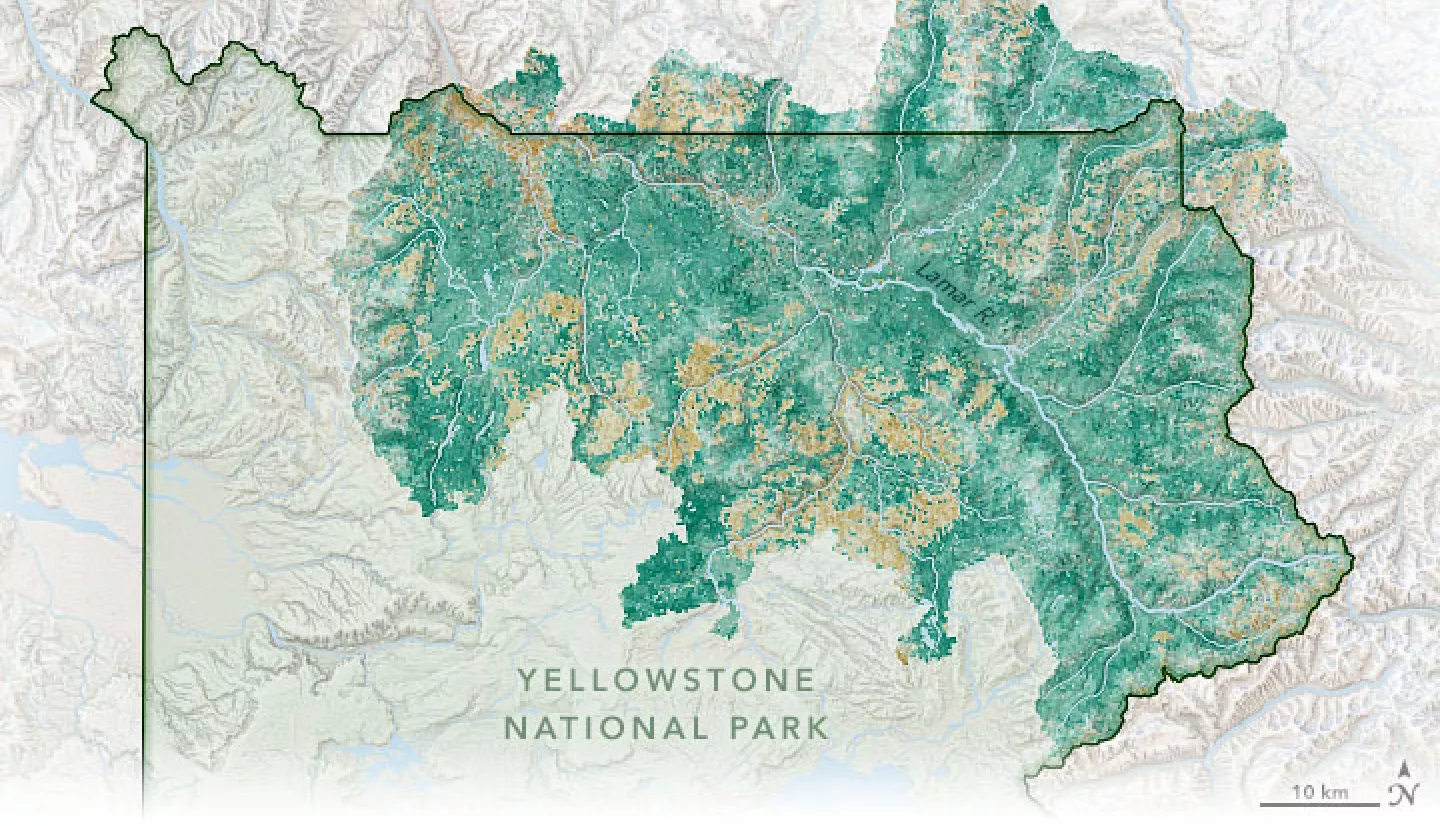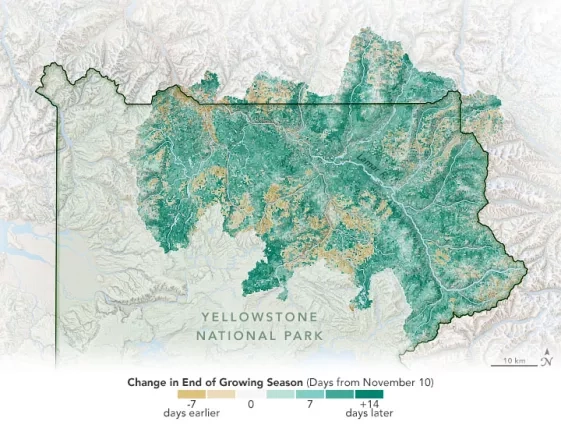The grass growing season in Yellowstone National Park is getting longer. NASA Earth observations are helping researchers understand how this impacts bison migration patterns. Due to climate change, snow falls later in autumn and melts earlier in spring. Grass has more time to grow, and that means bison have more vegetation to feast on. This greater availability of food has helped boost the park's bison population. The herd’s numbers have increased from 500 in 1970 to nearly 6,000 in 2022.
NASA satellite data has led to a better understanding of these trends. Christopher Potter, an Earth scientist based at NASA’s Ames Research Center, mapped changes in vegetation and snow cover in Yellowstone’s Northern Range between 2001 and 2017. For his study, he looked at data from NASA’s Aqua and Terra satellites. The MODIS instruments aboard these satellites capture images across almost the entire surface of Earth each day.
Potter’s research not only helped confirm this link between the longer growing season and bison proliferation. He also found that bison are more likely to leave the protected areas of the park as their grazing options expand. Bison can also carry a bacterial disease known as brucellosis, which can cause flu-like symptoms in humans. Outside of the park, they can spread it to other wild species and domesticated livestock.
This data could help wildlife managers better predict the movements of the herd and help reduce conflicts with humans.
Potter's study appeared in the journal Landscape Ecology in 2020.
More information available at the NASA Earth Observatory story Satellite Observations Aid Bison Management.




